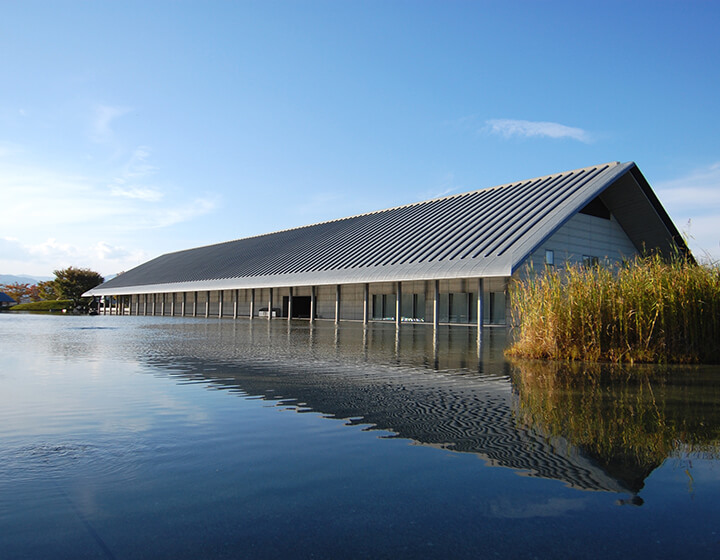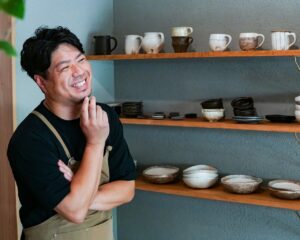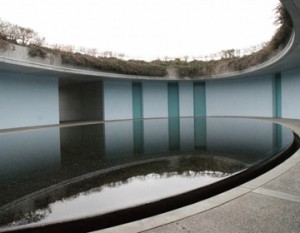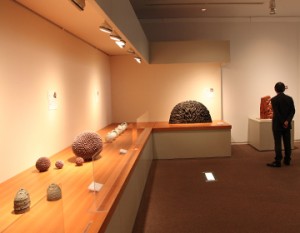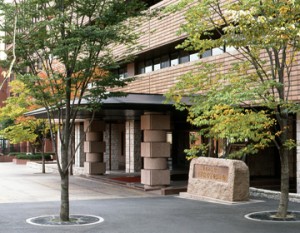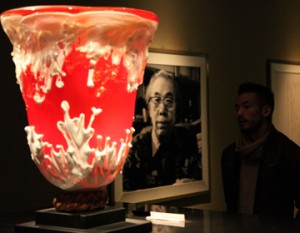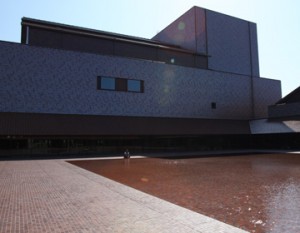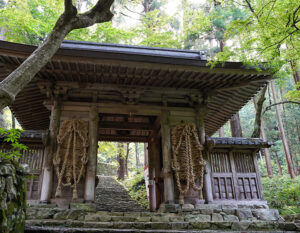Lake Biwa is the largest lake in Japan. Located on the shore of the lake is the “Sagawa Art Museum,” which is called a “floating museum. The site is boldly lined with water, and the three modern buildings built to float on the water create a unique and mysterious space. This exceptional museum, where visitors can view the works of three of Japan’s greatest masters all at once, creates new encounters between visitors, art, and nature.
Art Museum Surrounded by Nature on the Shore of Lake Biwa
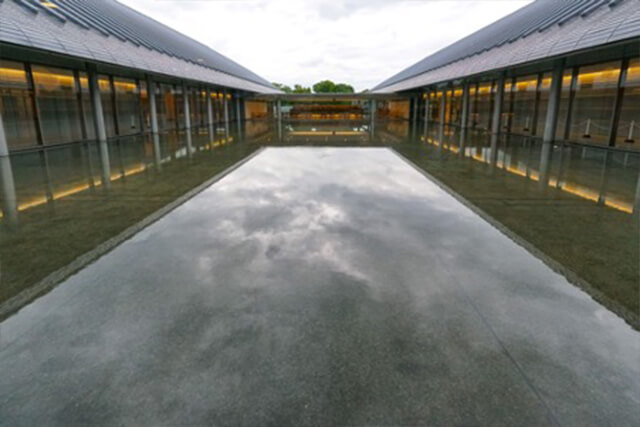
The Sagawa Art Museum is located in Moriyama City in the southwestern part of Shiga Prefecture, a region rich in nature with Mount Hiei in the distance to the west. The museum consists of two buildings: the main building, which seems to float in the water garden that occupies most of the site, and an annex that has exhibition rooms under the water. The monotone-toned building has a large, straight roof with supporting pillars lined up in a regular pattern, reminiscent of a solemn temple. The architecture, which blends well with the beautiful natural environment along the shores of Lake Biwa, has been highly acclaimed and has received numerous awards, including the Good Design Award.
Opened based on the collection of the founder of Sagawa Express
The Sagawa Art Museum opened in 1998. Sagawa Express, known for its “flying legs” logo, began as part of its 40th anniversary project, aiming to contribute to the promotion and development of art and culture. The founder of Sagawa Express had always had a deep knowledge of art, and it was his long-cherished wish to open an art museum with his own collection. After the founder passed away, Eiichi Kuriwada, the current director of the museum, followed his wishes and opened the museum, which houses the world’s finest works of art.
Museum Floating on Water
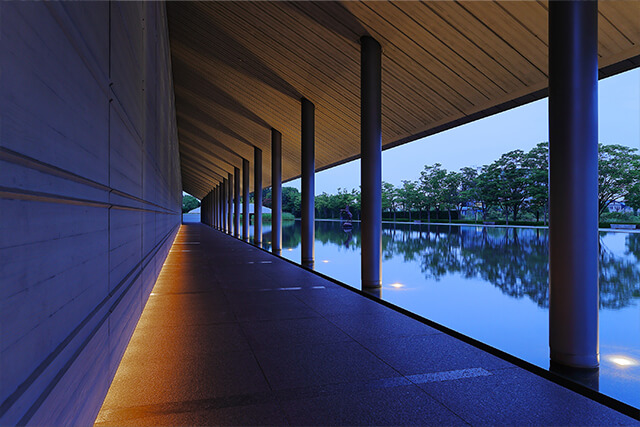
From the entrance to the main building, visitors walk through a corridor along the water garden. As you gaze at the water bobbing around your feet and think of Lake Biwa, you will feel as if you are walking on the surface of the lake. The wind from Lake Biwa caresses the surface of the water in the water garden, and the shimmering shadows of the water are reflected on the walls and ceiling, which explains why this place is called a “floating museum. The ” Ezo Deer ” in the water garden was created by sculptor Tadayoshi Sato in 1971 to commemorate the Winter Olympics held in Sapporo.
A Luxurious Collection of Japan’s Finest Art
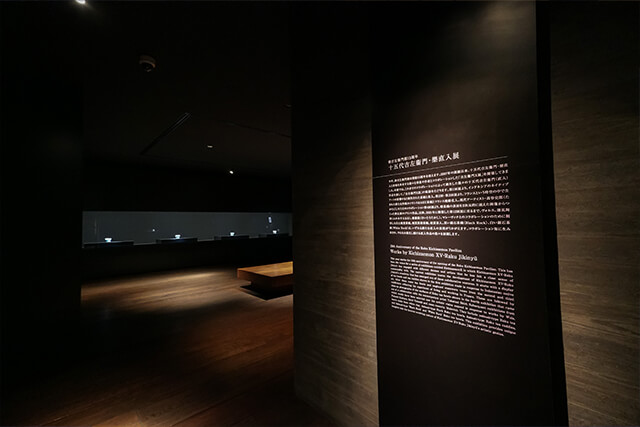
The most significant feature of the Sagawa Art Museum is its permanent collection of works by three leading Japanese artists : painter Ikuo Hirayama, sculptor Tadayoshi Sato, and ceramicist Raku Kichizaemon XV.
Initially, the museum was intended to focus mainly on the founder’s collection, but if it were only a collection of items collected by one individual’s taste, it would resemble a museum of hidden treasures. When the museum opened in 1998, Ikuo Hirayama was considered the best in the world of Japanese painting, and Tadayoshi Sato was the best in the world of sculpture. In 2007, the Raku Kichizaemon Museum was opened to exhibit the ceramic works of Raku Kichizaemon XV, who has been making Raku ware in the same way for over 400 years in Kyoto, the birthplace of Sagawa Express Co. Thus was born the current Sagawa Art Museum, which focuses on three leading contemporary artists.
Ikuo Hirayama, a Japanese painter who prayed for peace
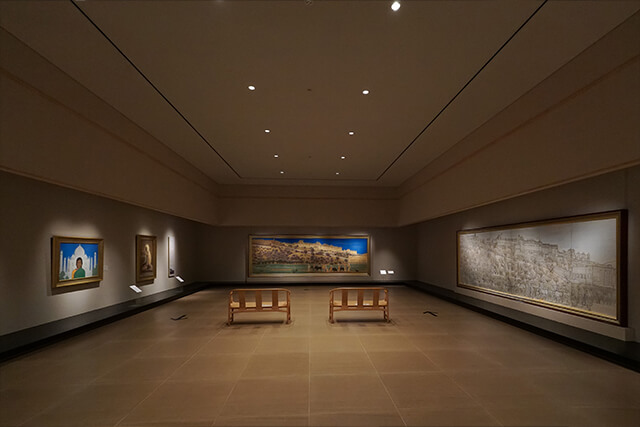
Ikuo Hirayama is a Japanese-style painter from Hiroshima Prefecture. Considered by many to be the greatest of postwar Japanese-style painters, he served as president of Tokyo National University of Fine Arts and Music and as chairman of the Japan Art Academy.
The caravan teams that led camels across the desert were a symbol of peace for Hirayama, and “The Morning of Ouran,” “The Evening of Ouran,” and “The Moon of Ouran,” which depict morning, evening, and night scenes with caravan teams as motifs, are representative works of the artist’s. Many of his works are richly colored, especially the mysterious blue color called ” Hirayama blue,” which is expressed by rock paints made from lapis lazuli, azurite, and other gemstones.
Although Hirayama had avoided using war as a subject matter due to his own war experiences, he was moved by the eyes of children he met in Sarajevo during the civil war and painted “Prayer for Peace – Sarajevo War Scar”, which is a very rare work depicting the war itself.
Sculptor Tadayoshi Sato pursues the beauty of humanity
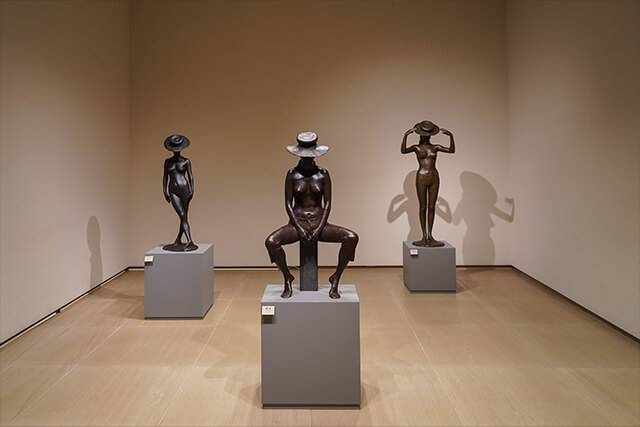
Sculptor Tadayoshi Sato’ s most notable feature is that he has continued to create Japanese people. When Sato began sculpting in the early postwar period, most of his models were deeply sculpted Westerners, but he dared to pursue the ordinary “human beauty” seen in everyday life, and this is what drew his attention. At first, he was ridiculed as “Sato’s filth,” but in 1952, his head sculpture “Gunma no Hito” was highly acclaimed as ” the first work by a Japanese hand to express a Japanese face,” and he became the first Asian to hold a solo exhibition at the Rodin Museum in Paris, and became one of Japan’s leading sculptors. He became the first Asian to hold a solo exhibition at the Rodin Museum in Paris.
The Sagawa Art Museum has more than 180 works in its collection, including his representative ” Hat Series,” as well as statues of children and heads, and constantly exhibits sculptures and drawings that match the theme of the day.
Sato is known for his realism and excellent drawing skills, and his works allow viewers to feel the breath of the models and their inner lives.
Raku Kichizaemon XV, a potter of Raku ware for 450 years
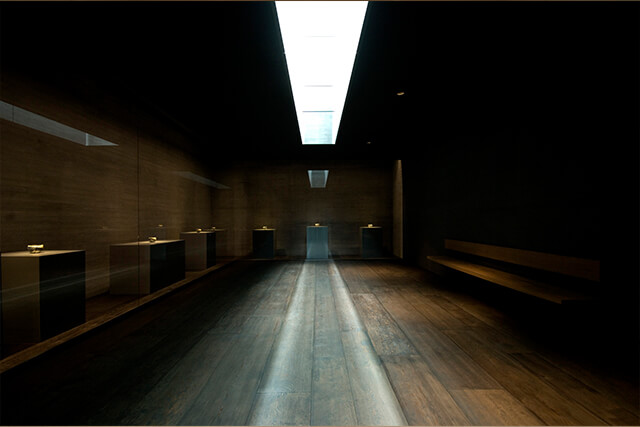
The Raku Kichizaemon Museum exhibits the works of Raku Kichizaemon XV, a ceramic artist. Raku Kichizaemon is the head of the Raku family, which has been in existence for 450 years since he created Raku tea bowls under the inspiration of Sen no Rikyu in the Azuchi-Momoyama period. The works on display here are those of Raku Kichizaemon XV, who succeeded to the Raku name in 1981.
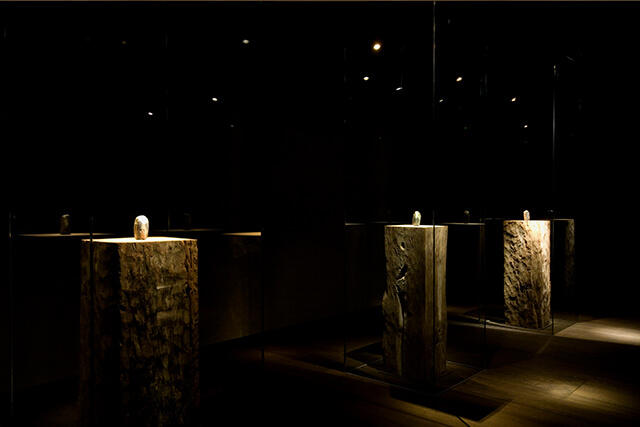
Surprisingly, the exhibition space itself was also Raku’s own idea. Based on the concept of ” Shuhari,” which means to follow the teachings of one’s master, to develop and create new works by following his techniques, the museum has an underground exhibition room buried in a water garden, which is rare for an art museum.
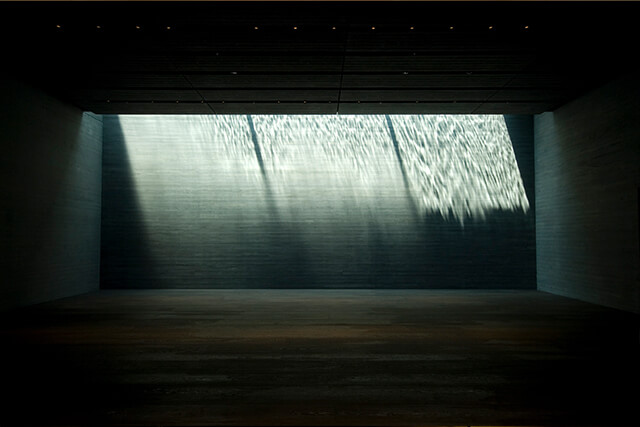
Since its opening in 2007, the museum has held the “Raku Kichizaemon X” series of exhibitions in collaboration with places and things that are dear to Raku Kichizaemon XV, including native Indonesian art and works influenced by the French climate. The challenging new works created with each collaboration continue to surprise and inspire viewers.
Sitting at the same level as the water surface
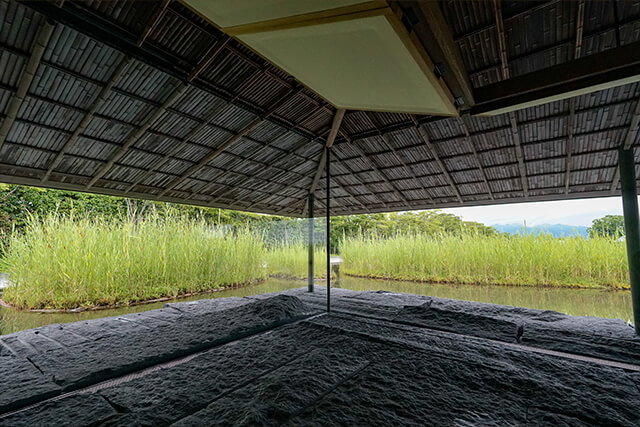
Another must-see exhibit at the Raku Kichizaemon Museum is the “Teahouse” attached to the exhibition room. The teahouse, also designed by Raku, is located on the first basement level, and visitors can enjoy the view of the water surface as they walk from the entrance, through the water and the booths to the ground level, and finally to the hall.
Raku Kichizaemon XV placed great importance on the line of sight. By lowering the floor to a level as close to the surface of the water as possible, Raku Kichizaemon wanted visitors to sit at the same eye level as nature and feel the sensation of being one with nature on an equal footing.
Feel the relationship with nature through all five senses.
Normally, the hall is separated from the outside by glass, but these glass doors can be opened wide. The glass doors can be opened wide to create an extraordinary space away from the hustle and bustle of daily life. If you feel the breeze on the surface of the water on your skin and listen to the rustling sound of swaying plants and trees, you may experience a sense of becoming one with nature that you would normally overlook.
A series of fascinating special exhibitions are being held one after another.
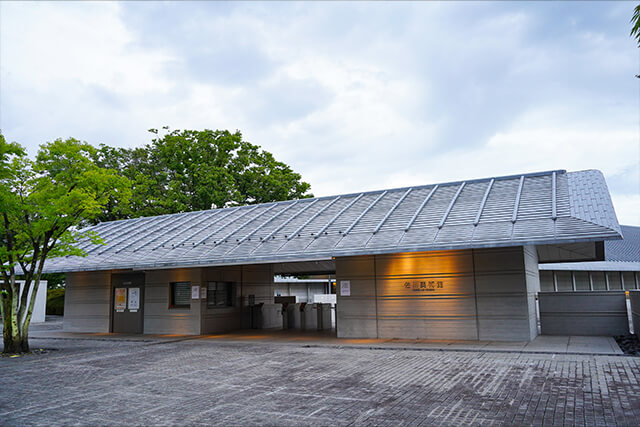
The Sagawa Art Museum also holds a wide variety of special exhibitions, including “Banksy & Street Artists” and “Picasso – The Origin of Inspiration” in 2022, and the popular “Design Ah Exhibition in SHIGA” attracted 140,000 visitors. The museum as a whole offers a variety of exhibitions throughout the year. The entire museum strives to offer a variety of genres of art throughout the year.
Experiences that hone the senses
The Sagawa Art Museum delves into the worlds of three of Japan’s finest artists from a variety of perspectives, and presents different expressions with the passage of time and the changing of the four seasons. The mysterious space created by the combination of nature, the building, and the artwork is truly one-of-a-kind. Visitors can feel their senses being refined as they lose themselves in the extraordinary atmosphere of floating on the surface of the water. This museum will bring you such an experience.



